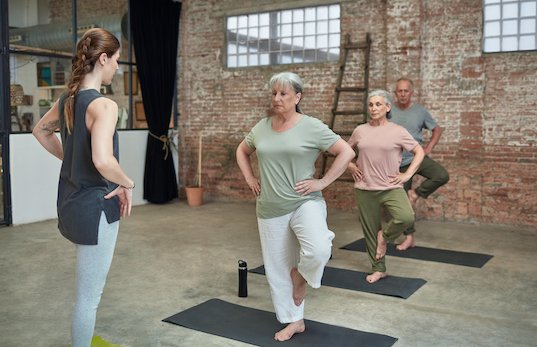Practice Balance to Move With Confidence
A great physical activity plan is one that includes a variety of different activities that train different skills. The American Heart Association recommends aerobic and strengthening exercises, but there are two other forms of exercise that can support your health and well-being — flexibility and balance! [1]
Both stretching and balance exercises can help you stay injury-free and independent throughout the years. You may already be stretching, but how often do you practice balancing? Doing balance activities like standing on one foot can feel silly at first, but balance activities are essential for helping prevent falls and bone fractures. [2]
Here are some balance activities to try:
Stand on one foot: Your balance routine can be as simple as standing on one foot for 30 seconds then transitioning to the other foot.
Beginner: Use a wall or chair to steady yourself.
Advanced: Stand on a pad or pillow to challenge yourself.
Walk backward: Step one foot behind you, then the other.
Beginner: Trace your hand on the wall or a bar beside you
Advanced: Take extra slow steps, spending more time balancing on one foot with each step.
·Walk sideways: Step one foot to the side, then step the other foot in to meet it. Continue a few steps in one direction, then go in the other direction.
Beginner: Trace your hands along a wall in front of you.
Advanced: Take it to a grapevine, or crossing step. Once you step your foot to the side, step the other foot in front of it rather then meeting it in the middle. Then
Step up: Stand in front of a step or at the bottom of a staircase and step up with one foot then the other.
Beginner: Use a railing or wall to steady yourself.
Advanced: Step up with one foot, then bring the opposite knee up to hip height before placing it down on the step. [3]
Training your balance is one of the best ways to prevent falls and stay independent throughout the years. Balance activities can also have other benefits as well, like strengthening your muscles and bones. When you’re doing things like balancing on one foot, you’re also building strength in your legs and core. [4]
Balance exercises — NHS UK.
Balance exercise — AHA.

